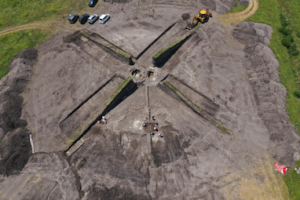
AMERICAN ASSOCIATION FOR THE ADVANCEMENT OF SCIENCE (AAAS)—Studying the skeletal remains of five people who lived roughly 4,500 to 5,000 years ago in the ancient Yamnaya culture, now recovered from archaeological sites in modern-day Romania, Bulgaria, and Hungary, anthropologists have documented telltale signs of physical stress incurred by horseback riding – possibly marking the earliest known evidence for horses being used as transportation. The findings bridge an important gap between the first evidence for horse domestication (likely for meat and milk) about 5,500 years ago, and the first use of horse-drawn chariots roughly 4,000 years ago. The adoption of horses to traverse long distances shaped modern human history by accelerating exploration, trade, and warfare. But when this key transition first occurred has remained unclear. Bits, leads, and other riding equipment are scarce in ancient archaeological sites, and a lack of well-preserved domesticated horse skeletons has stymied the analysis of physical stresses to the animals. Martin Trautmann and colleagues instead looked for evidence in the skeletal remains of 24 individuals excavated from sites in southeastern Europe, noting that lifelong riding would likely take an observable toll on the human body. Building on the concept of “horsemanship syndrome,” a collection of symptomatic skeletal alterations likely to impact habitual horseback riders, the researchers developed a set of six specific indicators, including changes and/or damages to the femurs, vertebrae, and pelvic bones. Of the 24 individuals studied – most of Yamnaya origin, but some from adjacent cultures – nine showed at least four of these six characteristics, marking them as likely horseback riders. Of these, five individuals exhibited at least five of the six characteristics, with one well-preserved skeleton from Strejnicu, Romania, evincing all six symptoms. “Together, our findings provide a strong argument that horseback riding was already a common activity for some Yamnaya individuals as early as [~5,000 years ago],” Trautmann et al. write.
_________________________________
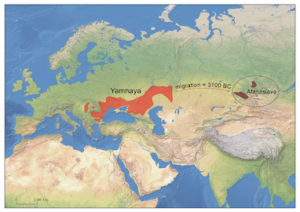
Map of the Yamnaya and Afanasievo overall distribution in Eurasia, situation of approximately 5000 years ago.
Trautmann et al., Sci. Adv. 9, eade2451 (2023)
_________________________________
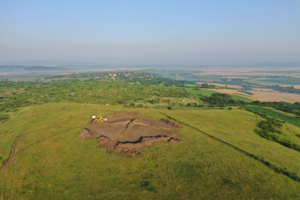
View of the kurgan in Malomirovo during the archaeological excavation in June 2021 in the context of its wider landscape of Upper Thrace in Bulgaria. Michał Podsiadło
_________________________________

Overview of the archaeological excavations of a Yamnaya kurgan in Malomirovo, Bulgaria. Michał Podsiadło
_________________________________
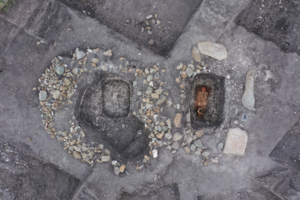
Yamnaya grave (no. 17) of a horse rider discovered in Malomirovo, Bulgaria. He was a man of 65-75 years old when he died. Michał Podsiadło
_________________________________
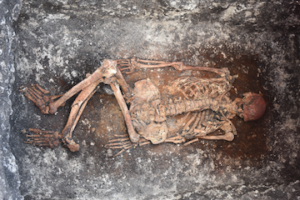
Detail of the horse rider discovered in Malomirovo, Bulgaria. He displays the typical burial custom of the Yamnaya. The radiocarbon date puts him into the 30th century BC. Michał Podsiadło
_________________________________
Article Source: AMERICAN ASSOCIATION FOR THE ADVANCEMENT OF SCIENCE (AAAS) news release.
*First Bio-Anthropological Evidence for Yamnaya Horsemanship, Science Advances, 3-Mar-2023. 10.1126/sciadv.ade2451
_________________________________
Advertisement

Don’t miss out on this unforgettable evening as Dr. Hawass reveals the most closely guarded secrets of ancient Egypt and presents his groundbreaking new discoveries and latest research live on stage. As the man behind all major discoveries in Egypt over the last few decades and director of several ongoing archaeological projects, Dr. Hawass may yet surprise you with unexpected revelations that will make news across the world.
_________________________________





